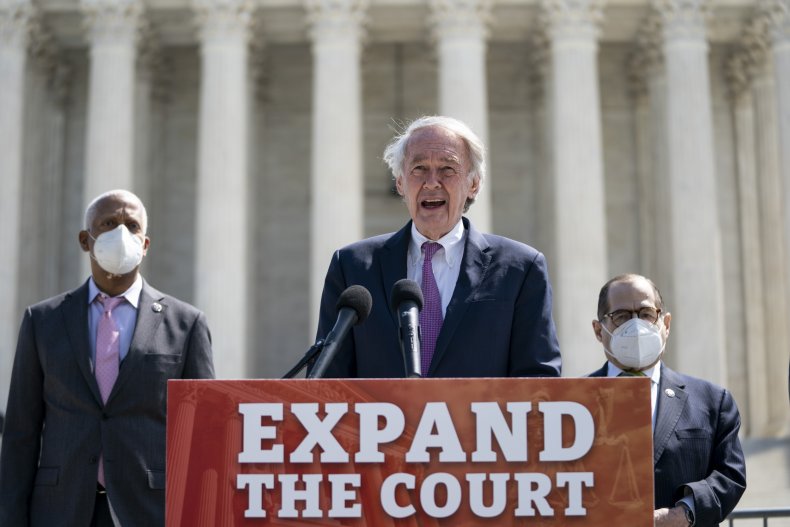The Democrats are returning to their roots during Joe Biden‘s presidency. The Clintonian concession that the “era of big government” was over has been nullified. The bigger-is-better approach to public policy fueled by “tax and spend” is back.
Biden was portrayed as the moderate candidate in the last election, so this switch may seem odd. Those who follow politics closely know, however, that was spin. He’s only “middle of the road” because the party has moved so far left since he first achieved national prominence.
Over his first hundred days, Biden has embarked on an ambitious program that will lead to a radical change in the role, scope and size of government.
In recent weeks, the president has announced the creation of a commission to study the makeup of the federal judiciary, as he promised he would during the campaign. Former president Donald Trump‘s achievements in remaking the third branch of government—ably supported by Senate Republican Leader Mitch McConnell—might be Trump’s most significant achievement, making it the thing that irks progressives the most. Rather than waiting on Father Time and the Grim Reaper to do their work so they may make major changes to the Supreme Court‘s makeup, congressional Democrats have introduced legislation increasing the number of justices from nine to 13.
The last time Biden took a position on the idea, he denounced it as “boneheaded.” That was back during the Reagan-Bush years. Challenged on the issue by Trump in 2020, he punted to the idea of a commission rather than answer “yes” or “no” to the question.
The dodge worked, and reminded us all what a skilled politician Biden is.

Since changing the direction of the Court can only be accomplished by changing the justices—right now there’s a soft six-to-three center-right majority—the only quick way to bring about change is to change the justices. Packing the Court may be fashionable among progressives not content to wait for Justices Clarence Thomas and Samuel Alito to depart, but it isn’t popular with the American people.
According to one recent survey, a majority of likely voters said they opposed enlarging the Court, especially if the purpose of adding justices was to change the direction of its rulings. Just 33 percent of those surveyed by Rasmussen Reports said they were in favor of adopting a proposal like the one put forward by congressional Democrats to add four justices as quickly as it can be done. A solid majority—55 percent—said they were opposed.
“On the specific question of increasing the number of Supreme Court justices to 13,” the polling firm said, “voters divide along party lines much as they do on the more general question. Fifty-six percent of Democratic voters approve increasing the number of justices to 13.” That includes the 29 percent who “strongly approve” of the proposal that congressional Democrats have already put forth as legislation even before Biden’s commission on the judiciary can make its report. Meanwhile, the pollster continued, “Seventy-four percent of GOP voters disapprove of the plan, including 70 percent who strongly disapprove. Among unaffiliated voters, 59 percent disapprove of increasing the number of Supreme Court justices to 13, including 49 percent who strongly disapprove.”
According to the pollster, those numbers are “little changed since October,” when 53 percent of those asked said they opposed packing the Court. Rasmussen found a slim majority in both surveys supporting term limits for appointments to the federal bench—though making that change would require a constitutional amendment, while the number of justices on the Supreme Court can be changed through legislation.
The idea of packing the High Court to change the direction of its rulings has been tried before. Franklin Delano Roosevelt tried to do it in the late 1930s but was rebuffed by a Congress controlled by Democrats—who were nonetheless punished for FDR’s overreach at the next election. There’s something about changing the rules to change an outcome that disturbs most voters. The Democrats had better figure that out fast, or they’ll suffer at the ballot box for their mistake.